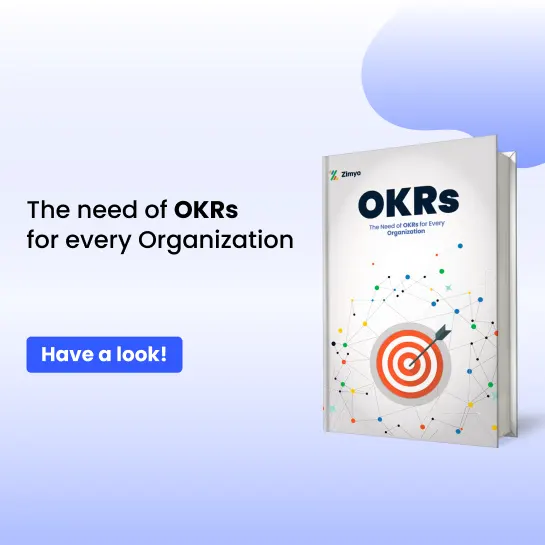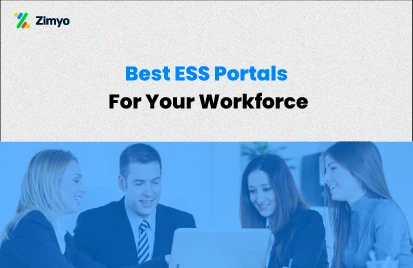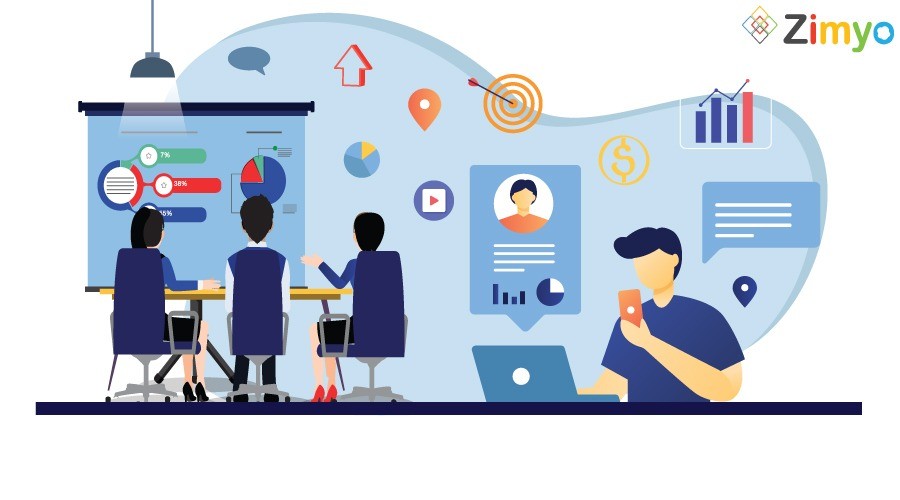Human resources department is essential to the success of any business. ✅ However, HR professionals spend far too much of their time on routine administrative activities rather than acting as a vital strategic component in the firm.?
You’d probably go to any length to free up some time as a busy HR professional. Employees’ recurrent requests for payroll records or HR forms may appear insignificant. Therefore, ceasing your usual work to address these staff needs can eat up your already limited time. Interruptions might sometimes make it difficult to concentrate.❌
An ESS (employee self-service portal) can assist you in getting back to what you want to do. So, employees will not disturb you as much with payroll-related or other work related inquiries if you leverage the benefits of ESS.?
What Is An Employee Self-Service Portal?
ESS or Employee Self-Service, sometimes known as Employee portals is an indispensable part of the modern Human resource information system. Using this, the employees of an organization can view, manage, and access their payroll and other HR information.
An ESS allows employees to have access to multiple information concerning human resources. Moreover, is a great way to empower your employees and to reduce the workload on your HR department.?
Employee self-service portals can help you save a lot of time.⏳
Employees can perform more payroll and HR tasks independently. Therefore, you will have more time to manage your tasks when your staff is less dependent on you.?
What Are The Characteristics Of A Self-Service Portal?
Using an Employee Self-Service Portal, employees can access their payroll information and other personal information. An ESS Portal helps an organization to save its labor cost and improves the efficiency of the work. It helps in improving the employee experience to a great extent, which in turn increases employee satisfaction.?
An employee self-service portal can create a positive work culture by easily providing all the information the employees need. It also allows the management to pass on only the correct and current information to the employees. ✅
This way, the employee can easily manage and review their information and accounts which in turn, saves a lot of time for HR administrators. ? With the help of an ESS, the employee can handle his/her HR-related tasks without much effort. Furthermore, they can apply for leaves, make changes in their personal information, and can update their expenses without even bothering the HR department.
Employee Self-Service Features:
A single platform can now deal with a wide range of HR functions that were traditionally performed through paper transactions or a variety of online alternatives. So, let’s have a look at some employee self-service features: ?
➡️ Employee Data Documentation
This is one of the most tedious and time-consuming tasks for any employer.⏳ It takes a lot of time to manually update the employee information and keep them up to date every time. It is prone to error and happens at a slow pace. ?
Even though the employee gives all information during the date of joining, there is no certainty that it will remain the same throughout his tenure in the office. With an Employee Self-Service Portal, the new information can be updated whenever required. This saves HR’s time and avoids the usage of paper for printing forms again and again.✅
➡️ Employee Benefits Enrollment
With the employee self-service features, an employee can view and manage their job benefits. At the time of hiring, the employees are made aware of the benefits they’ll get during their tenure with the company. However, there are times when an employee would want to know about these benefits again. ?
During such times, an ESS portal can fetch the exact details of what they need. Any important updates can be published in the ESS portal at once, which will help in saving time from holding company-wide meetings to explain the changes.
➡️ Pay slips Online
This employee self-service feature of the HRMS allows an employee to access and print his pay slips anytime. Another benefit of ESS is that it can display pay slips for all time and the employees can access even the pay slips of the past.
This again saves time. Imagine how tedious it would be to print and hand over these pay slips over and over again. ?
➡️ Alerts and Notifications
HR, managers and employees can receive notifications and alerts for shift changes, birthdays, upcoming holidays and more. Managers can easily notify employees about frequent shift changes so everyone’s on the same page.✅
➡️ Leave Application and Approval
This feature of the ESS Portal allows the employees to log in and apply for the leaves in an efficient manner. You can apply for the leaves either via your mobile phone or desktops. This also allows managers to approve or reject these leaves on an immediate basis. ❌
➡️ Attendance Regularization
This employee self service feature enables the employee to regularize their attendance. The employee can view their attendance and raise a request if there are any corrections required. Once this request is approved by the manager, the attendance information is automatically updated.
➡️ Online Punching
Employees can use online punching to record their attendance even while they are on the move. Employees can use their mobile app to clock in and out. This enables supervisors to keep track of their employees’ whereabouts.
➡️ HR Documentation Online
The employee Self-Service features enable the organisation to publish policy papers for employees to view. This makes it simple to communicate changes to corporate policies to employees.
➡️ Income Tax Declarations
In certain countries, income tax is calculated using the employee’s disclosed wage as well as alternative sources of income and investments. Employees can easily make disclosures online through the ESS Portal, which allows HR professionals to compute income tax without having to do so manually. ?
Benefits of ESS Portal
There are many benefits of ESS software. Some of them have been mentioned below: ?
➡️ Improve Employee Satisfaction
Today’s employees seek more influence over their jobs. You can put them in charge of their own performance by offering them direct access to information about their assignments, training, and development prospects. Employees who have greater control spend much less time enquiring about internal programs and are more inclined to be engaged in the organization.?
➡️ Saves Time For Strategic Tasks
Routine HR administration chores that eat up time and energy for your HR staff or management, such as generating new pay stubs or providing benefits updates, can be redirected to more critical responsibilities.?
Companies can use ESS to quickly deliver important details regarding salary, rules, and benefits to their entire staff. HR can focus on strategic business partnerships, new training programs, talent acquisition, and other efforts with a self-service portal in place. ✅
Instead of waiting for someone to resolve employee issues and assist them with what they need, some HR platforms offer an internal information source of resources which employees can use to discover instant solutions to their queries.
➡️ Streamline Communication
Handling holidays and PTO requests, as well as maintaining accurate attendance records, is one of your HR department’s most important responsibilities. An ESS-enabled HR system centralizes team, department, and company-wide communication, making it simple for everyone to connect and stay informed.?
➡️ Improves Efficiency
Employees can monitor their attendance before it is processed for payroll, and they can also submit requests for changes, which eliminates the requirement for pay slip revisions.
➡️ Eliminates Tedious Paperwork
In HR departments, administrative activities account for a whopping 60% of total work hours. This means that employee self-service has the potential to reduce workload by 40%. In fact, employee self-service is an excellent example of why three out of four HR experts believe that HR technology is crucial to future business growth.
By letting employees edit their personal information online, an employee self-service portal aids HR managers in getting paperwork in line.?
➡️ Provides Transparency
Employees can view their attendance summary right on their screens within a few clicks with the help of ESS. This helps them in ensuring that the organization has captured the correct data for payroll processing.✅
➡️ Reduces Costs
Employee self-service has a direct influence on admin expenditures. Say goodbye to printing pay slips and reports over and over again!?
➡️ Enables Instant Decision Making
Managers and HR may make quick decisions using comprehensive data provided by Employee Self Service. When a manager is going to approve a leave request, for example, the ESS displays information such as the employee’s leave balance, a snapshot of attendance for the period specified, a list of employees on leave during the same time period, and so on.
Challenges Of Using Employee Self Service Portal
The benefits of ESS help you save money and time, as discussed above, but it also has drawbacks. To get the most out of the benefits of ESS, keep the following points in mind.?
- To minimize the possibility of errors, employees must have prior experience and training. Not only should training cover how to utilize the system, but also how to troubleshoot issues.
- Depending on your organizational requirements and the provider, it may require an initial investment.
- Customize pre-designed self-service items to match your company’s needs.
- Strong technical security is essential since an employee portal stores and accesses confidential information. Security concerns may also make employees feel unsafe and reluctant to update their information, particularly in light of data privacy rules. You must be ready to respond to these issues in a timely manner.
Addressing these challenges will help your employee self-service portal work more smoothly and efficiently in the long term.?
Best Practices To Leverage The Benefits Of ESS
Having an employee self-service portal isn’t sufficient in and of itself. To generate meaningful business value, it’s critical to properly leverage it.✅
To get a kick-start, take note of the following points: ?
➡️ Keep It User-Friendly
The ease of use of the system is the most critical aspect of user adoption. An outdated, clumsy, and confusing employee self-service portal will do more harm than good to your effort.❌
Look for a system that provides a gateway with a clean, intuitive user interface, logical key placement and icon usage, familiar phrasing, and easy navigation so that they can quickly become accustomed to the layout.
➡️ Personalize
This is critical for delivering a consistent and pleasant brand experience. The portal should not only mirror your company’s branding whenever possible, but it should also offer configurable choices that allow each employee to have a unique experience.?
➡️ Follow Up Is A Must
Details don’t slip between the cracks because of end-to-end connectivity and ongoing follow-up on service requests. Employees should be able to check the status of a request, analyze projected deadlines, and evaluate work scenarios using the portal. An integrated ESS platform helps to evaluate the service quality with feedback forms and automatic surveys as well.
➡️ Create Awareness
People must be aware of the self-service option and understand why it should be utilized. Explain the rationale for its adoption, as well as the desired aims and numerous benefits of ESS. To help improve any flaws, you should also consider employee input, suggestions, and ideas.
Conclusion
In conclusion, by implementing an ESS portal, an organization can save labor hours and improve the efficiency of work done to a great extent. ✅ Moreover, it also saves money which can be used for other major activities. Thus, we can say that an Employee Self Service(ESS) portal offers great benefits to both employees and the organization.?






